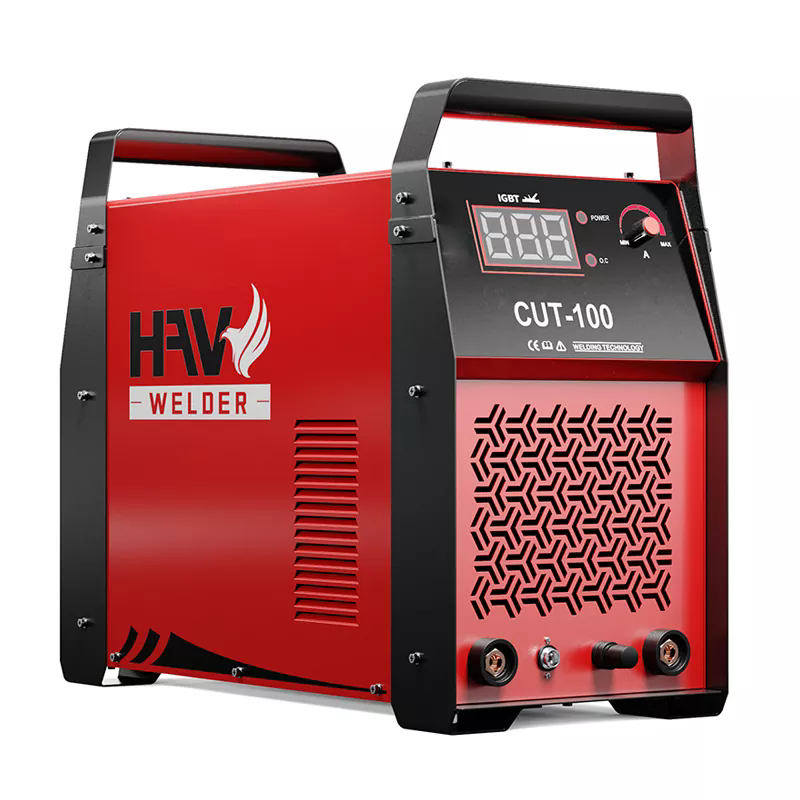How Plasma Cutting Works
2024-07-05
Plasma cutting is a process used to cut through electrically conductive materials such as steel, aluminum, copper, and other metals using a plasma torch. It's widely used in metal fabrication, automotive repair, construction, and industrial manufacturing. Here's how plasma cutting works, its advantages, applications, and some safety considerations:
How Plasma Cutting Works:
1. Plasma Torch:
- The heart of the plasma cutting system is the plasma torch, which generates a high-velocity stream of ionized gas known as plasma.
2. Plasma Generation:
- An electric arc is created between the electrode inside the torch and the workpiece. This ionizes the gas passing through the torch, turning it into plasma.
3. Cutting Action:
- The plasma arc melts the metal at the cutting point and blows away the molten material, creating a kerf (cut) in the workpiece.
4. Gas Flow:
- Additional gases, such as oxygen, nitrogen, or compressed air, are used to blow away the molten metal and cool the cut, preventing it from re-solidifying and maintaining the cutting efficiency.
5. CNC Control (Optional):
- In automated plasma cutting systems, the torch movement and cutting parameters can be controlled by computer numerical control (CNC) software, allowing for precise and repeatable cuts.
Advantages of Plasma Cutting:
1. Versatility:
- Can cut a wide range of electrically conductive materials, including mild steel, stainless steel, aluminum, copper, and brass, at various thicknesses.
2. Speed:
- Plasma cutting is typically faster than traditional cutting methods such as oxy-fuel cutting, especially for thin to medium thickness materials.
3. Precision:
- Offers excellent cutting precision and accuracy, especially when used with CNC-controlled systems, allowing for complex shapes and intricate designs.
4. Clean Cuts:
- Produces clean, smooth cuts with minimal dross (residue) and minimal heat-affected zones, reducing the need for secondary finishing operations.
5. Cost-Effective:
- Lower operating costs compared to laser cutting, especially for thicker materials, making it a cost-effective cutting solution for many applications.
6. Portability:
- Portable plasma cutting systems are available, allowing for on-site cutting and fabrication, making them suitable for construction, maintenance, and repair work.
Applications of Plasma Cutting:
1. Metal Fabrication:
- Used for cutting metal plates, sheets, pipes, and profiles in fabrication shops, manufacturing facilities, and construction sites.
2. Automotive Repair:
- Ideal for cutting automotive body panels, frames, exhaust systems, and other metal components in automotive repair and restoration shops.
3. Construction:
- Used for cutting steel beams, pipes, and plates in construction projects, such as building construction, bridge construction, and infrastructure development.
4. Industrial Manufacturing:
- Employed in various industries, including aerospace, shipbuilding, machinery, and metalworking, for cutting metal components and parts.
5. Art and Decorative Metalwork:
- Utilized by artists, metalworkers, and sculptors for creating decorative metal art, signage, sculptures, and custom metalwork.
6. HVAC and Ductwork:
- Used for cutting metal sheets and ductwork components in heating, ventilation, and air conditioning (HVAC) systems and duct fabrication shops.
Safety Considerations:
1. Protective Gear:
- Wear appropriate personal protective equipment (PPE), including safety glasses, welding gloves, flame-resistant clothing, and a welding helmet with a shaded lens.
2. Ventilation:
- Ensure adequate ventilation in the cutting area to remove fumes, gases, and smoke generated during the cutting process.
3. Fire Safety:
- Keep flammable materials away from the cutting area and have fire extinguishing equipment readily available.
4. Electrical Safety:
- Follow electrical safety precautions when working with plasma cutting equipment, including grounding the workpiece and the cutting table.
5. Training and Certification:
- Ensure operators are properly trained and certified in plasma cutting techniques, equipment operation, and safety procedures.
6. Maintenance:
- Regularly inspect and maintain plasma cutting equipment to ensure proper functioning and safe operation.
Plasma cutting is a versatile and efficient cutting process widely used in various industries for cutting metal materials with precision and speed. By understanding how plasma cutting works, its advantages, applications, and safety considerations, operators can effectively utilize this technology for a wide range of cutting tasks while ensuring safety and quality.



